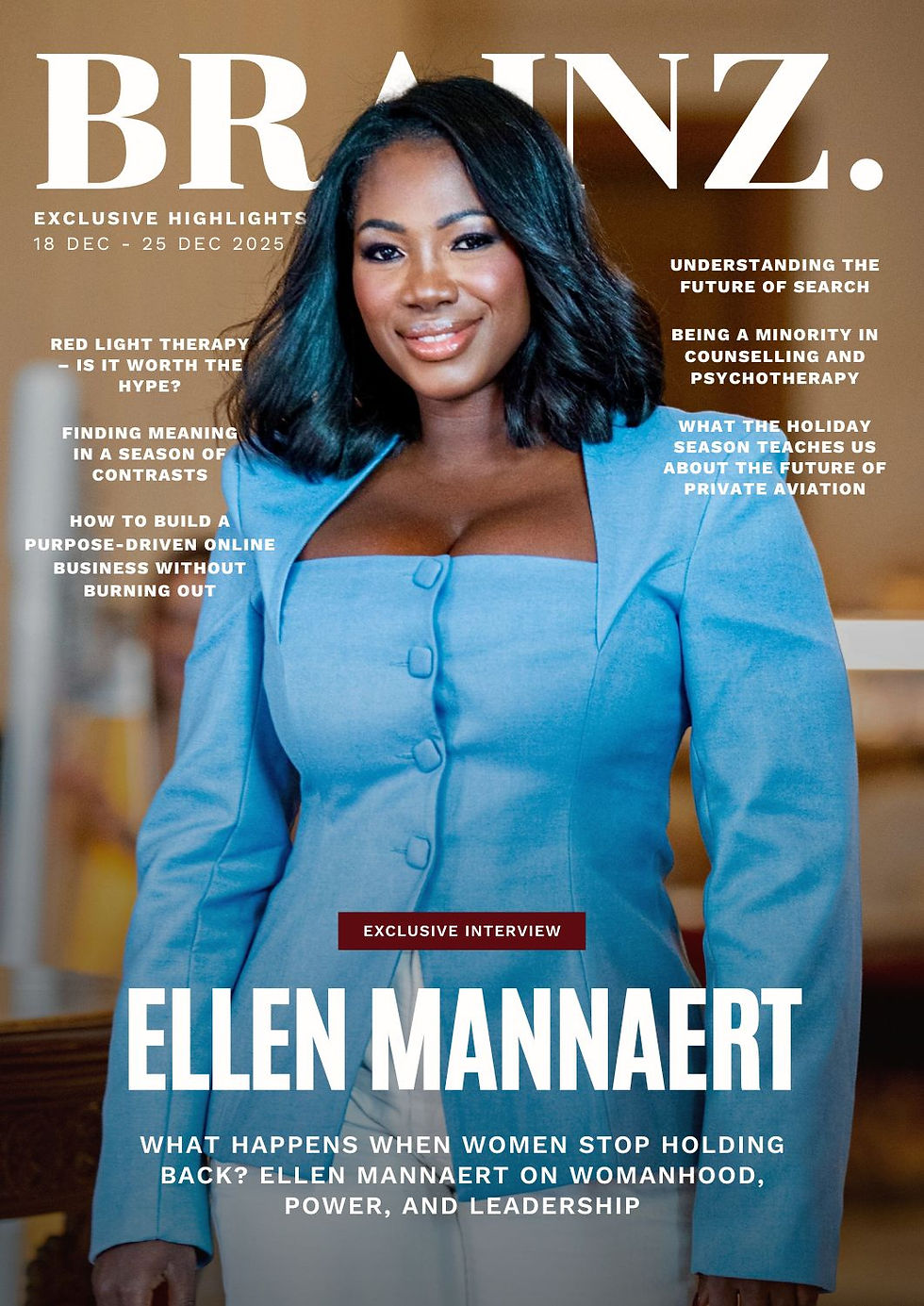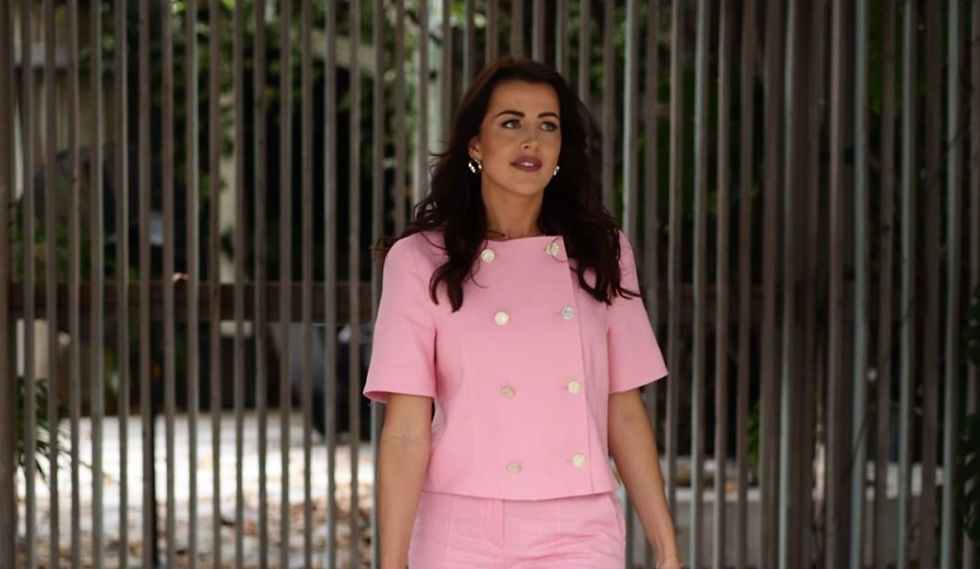3 Simple Ways To Change The Way You Think
- Brainz Magazine

- Jan 21, 2022
- 5 min read
Written by: Lyn Ray, Executive Contributor
Executive Contributors at Brainz Magazine are handpicked and invited to contribute because of their knowledge and valuable insight within their area of expertise.

Early on in my coach training we were introduced to the fact that the way we think impacts on how we feel, which affects how we behave and therefore our outcomes. It’s totally logical but I’d never joined the dots before. This recognition for me was a game-changer. I realised if I wanted to change my life, I needed to change the way I was thinking, and to support clients to do the same. It requires an investment of time but it’s not difficult.

So how do you do this?
1. Meditate
A year or so previously I’d started to mediate, and I knew first-hand that this was having a positive impact on the way I was thinking. I’d started to meditate to help calm my mind that never stopped, swinging from things I hadn’t done to those I needed to do with very little time spent in the present. I used to wake in the night and write myself notes to remind me of things that I needed to do!
With the help of a meditation app, I’d started to meditate most days, and relatively quickly I could feel the benefits. I was calmer and able to think more logically, I could focus and get tasks done more efficiently and I felt more compassionate to myself and others. This intrigued me and I started to investigate the scientific research that had been carried out into meditation. It backed up my personal experience.
Using MRI scanning, Dr Sara Lazar and researchers at Harvard University were able to identify that after an 8-week programme of meditation, there were physical changes in the brains of participants with the areas involved in “the regulation of emotion, compassion, coordination, learning and memory” having increased in size whilst the areas relating to anxiety and stress reduced in size. Just in the same way as we physically change our bodies by exercising, we change our brain by meditating. It’s exercise for the brain!
Dr James Stahl, previously of Harvard, in “Now and Zen: How Mindfulness can change your brain and improve your health” encourages people to incorporate a 10-15 minute meditation practice into their daily routine. When I encourage clients to do this, I am often met with some resistance - “I don’t have time to do that.” I promise them that they will get this time back and more as their thinking is clearer and they become more efficient at the things they need to do.
I believe the key to imbedding a meditation practice, is to do it at the same time every day and to do it in a place you like and are comfortable. That way it will become a habit you want to build. To start with, using a meditation app can be helpful. Try a few until you find one that works for you. And if you miss a few days don’t stress it, just start again. The more you do it, the easier it will become.
2. A Gratitude Practice
In her book “The How of Happiness” Sonja Lyubomirsky, professor of psychology at the University of California details that the emerging research into gratitude, show a multitude of benefits. “People who are consistently grateful have been found to be relatively happier, more energetic and more hopeful, and to report experiencing more frequent positive emotions.”
Our brains have a natural tendency to focus on the negative things that happen to us. This is evolutionary as the brain’s principal job is to keep us safe. It doesn’t care if we are happy, nor if we are fulfilled. Implementing a regular gratitude practice, helps to focus on the things that are good in our lives and to build a more positive perspective.
I encourage my clients to write down three things that they are grateful for every day. The science says that once a week is sufficient, but in my experience, especially in the early days, is that it’s good to make it a daily practice. It takes repetition to build new neural connections. The trick is to challenge yourself to see different things each day, and it becomes a positive cycle. The more you focus on the things you are grateful for, the more you see. The key to building new habits, as James Clear advises in “Atomic Habits”, is to make it “obvious, attractive, easy and satisfying.” Buy a nice notebook that you will want to use, put it somewhere you will see it and do it at a time of day that works for you. For me I have my notebook on my bedside table and write in it before I go to sleep at night. I promise you, you will be amazed at how many things in your life you have that you are grateful for.
3. Give your brain good instructions on what you want.
Every day our brain is subjected to a huge amount of data. It’s not able to process it all. The reticular activating system (RAS) is a very cool part of our brain that filters out the information that we consciously receive.
So, to change the way we think we need to give our RAS better instructions. In her brilliant new book “The High Five Habit” Mel Robbins advocates that every day we should write down 5 things that we want, and then start taking action to work towards these. Taking action is key here. You can’t just write them on a bit paper and hope for a miracle.
The things you write can change every day or they can be the same. They can be big things or small things. The key here is that when your brain knows what it is that you want, it will start filtering things so that you start to see opportunities and ways to move you towards what you want. Since I’ve started going this, I’m also far more strategic where I focus my time and energy.
Want to see your RAS in action, see how many red cars you can spot over the next day or so. When your brain gets the message that you want to see red cars, it will highlight these to you, and you will notice far more!
These are simple things that you can implement in 20-30 minutes a day. When clients say they don’t have the time, I ask them to really think about how they are using their time. We can all be guilty of scrolling through social media or binge-watching Netflix. We all have the same number of hours in the day, it’s how we choose to spend our time that makes a difference to the quality of our life.

Lyn Ray, Executive Contributor Brainz Magazine
Lyn Ray is a Transformational Coach who specialises in helping busy people become happier, healthier and more fulfilled. For most of her adult life Lyn struggled to find balance, either overworking at the expense of other areas of her life, or sacrificing her career to enable her to be there for her family. This led to feelings of anxiety, frustration and a lack of fulfilment. After becoming increasingly interested in personal development, the lightbulb moment came when Lyn recognised that she was discounting her own abilities and the opportunities open to her. She retrained as a Transformational Coach and now works with clients to enable them to recognise the unique strengths & skills they have, the opportunities open to them, the limiting beliefs that hold them back and to build positive beliefs and habits to enable them to live the life they want.









